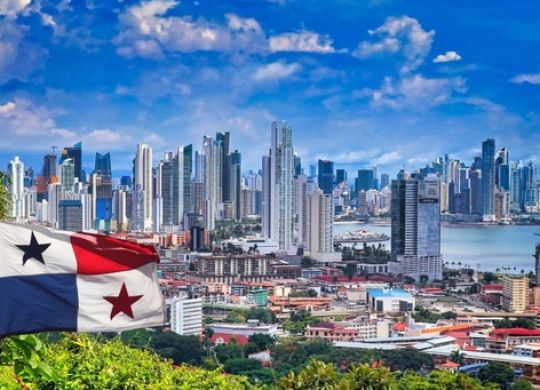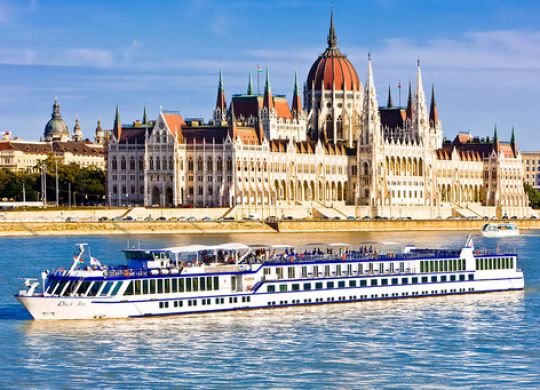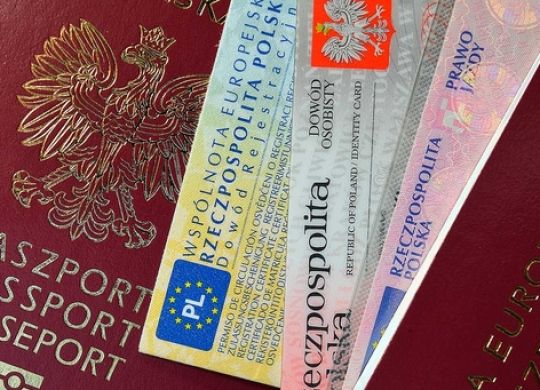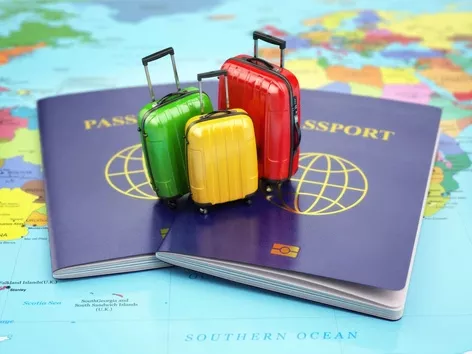Moving to Panama in 2024: prices, salaries, advantages and disadvantages of living in the country for expats

More and more expats are considering Panama as a place of permanent residence due to its affordable prices, pleasant climate, and lack of taxes for foreigners. Learn more about the advantages and disadvantages of living in Panama
Panama is located in Central America, bordering Colombia to the east and Costa Rica to the west. With an area of 78,200 square kilometers and a population of about 3.4 million people, the country has a population density of 43.61 people per square kilometer. The official language is Spanish.
Although Panama is a relatively small country, it offers favorable living conditions at an affordable price. Housing, transportation, and food costs in Panama are lower than in many developed countries, making it an attractive place to live. In addition, the country has a stable healthcare system and a safe political climate.
Panama is a popular choice for retirees and expats looking for a relaxing life in a tropical climate. The country offers a wide range of activities, including beaches, rainforests, and dynamic cities. It also attracts businessmen thanks to its growing economy and favorable tax laws. If you are looking for a comfortable and affordable place to live, Panama is worth your attention.
According to statistics, most expats move to Panama from Canada, the United States, Spain, and Colombia.
You can find out more about the list of countries that are willing to pay expats to move to them here.
Benefits of living in Panama
Living in Panama attracts many expats due to the affordable prices for accommodation, healthcare, food and other services. The country is consistently ranked among the top five best places in the world to retire, and has been repeatedly ranked first in the annual International Living Global Retirement Index.
Resident retirees can take advantage of numerous benefits and discounts, making life in Panama even more attractive. For example, retirees receive 50% off entertainment, 30% off bus, boat, and rail tickets, 25% off domestic airfare, 20% off medications, and 10% or more off medical services.
Panama offers favorable conditions for a comfortable life, including a warm climate, beautiful nature, and developed infrastructure. Let's take a look at the main advantages of living in Panama in 2024.
Affordable medical care
One of the key advantages of living in Panama is affordable and high-quality healthcare. Compared to the United States or Canada, medical services in Panama are much cheaper, but the quality does not suffer. Although public hospitals offer a decent level of medical services, expats often face overcrowding and long waiting times for non-emergency cases.
Private hospitals are more popular among foreigners due to shorter waiting times and more comfortable conditions. For example, a visit to a local hospital can cost $25-$40, and a doctor's consultation can cost $40-$60. Although prices in private clinics are higher, many people choose them because of the better quality of service.
State health insurance is mandatory for working people and is deducted from their salary (9.75% monthly). In addition, there are numerous private insurance companies offering a variety of conditions and coverage of medical services. It is possible to live without insurance, but in case of hospitalization, you will have to pay for the treatment yourself.
Affordable cost of living
The cost of living in Panama can vary depending on the location, type of housing, and family composition. In general, the cost of living in Panama is significantly lower than in many other countries. For a comfortable stay, expats should plan a monthly budget in the range of $1,500-3,000. This amount takes into account basic expenses such as rent, food, and other daily needs, while ensuring a high standard of living in this tropical country.
Delicious food
Panama is known for a variety of traditional dishes, including tacos, ceviche, and the famous national dish, sancocho. If you are visiting the coast, you should definitely try the fresh seafood and tropical fruits served there.
Each region of Panama can surprise you with its unique flavors, providing a great opportunity for a culinary journey that will satisfy even the most demanding gourmets.
Diverse landscape
Panama attracts expats due to its diverse and picturesque landscape. The country offers a wide range of natural scenery, including majestic mountains, beautiful beaches and vibrant cityscapes. It is an ideal destination for those who enjoy swimming, hiking, exploring the rainforest or just city walks.
The diversity of landscapes allows everyone to find their favorite activity and enjoy an active lifestyle against the backdrop of Panama's unique nature.
Comfortable weather
When it comes to nature and landscape, it is also worth mentioning another important advantage of living in Panama - the climate. As a tropical country, Panama boasts stable weather conditions throughout the year.
Temperatures here usually remain in the range of 29 to 32 degrees Celsius (which is equivalent to about 84 to 90 degrees Fahrenheit). This climate creates ideal conditions for living and recreation, allowing you to enjoy pleasant warmth regardless of the season.
Zero taxation
One of the important financial advantages of living in Panama is the absence of taxes on income earned outside the country. This is especially beneficial for those who work remotely for a foreign company or operate as digital nomads. Thanks to this, you can keep a significant portion of your earnings, which makes Panama an attractive place to live for many expats seeking to maximize their financial resources.
Cons of living in Panama
Now that we've looked at the advantages of living in Panama, let's move on to the opposite - some of the notable disadvantages of living in this country:
Nightlife noise
While many people love the city's dynamic atmosphere, particularly its vibrant nightlife, some may find the high noise levels annoying. Panamanians are known for their passion for partying, often accompanied by loud music in the streets and long conversations that last both day and night.
For those who value peace and quiet or need to go to bed early, the constant noise of music and fun can be a real challenge, especially when trying to sleep. Therefore, living in Panama may not be the best choice for those who prefer quiet and relaxation in the evening.
Language barrier
One of the biggest challenges faced by expats in Panama is the language barrier. English is not a widely spoken language in the country, which can make it difficult to perform everyday tasks such as grocery shopping or visiting government offices where the staff usually speaks only Spanish.
This can be a significant obstacle for those who do not yet speak Spanish. However, if you find support among a friendly community of Panamanian expats or locals, it can make your life much easier. For example, you can ask one of them to accompany you as an interpreter or help you learn the basics of Spanish. This way, you will be able to adapt to new conditions more easily and overcome difficulties related to the language barrier.
Limited acceptance of credit cards
In some parts of Panama, credit cards may not be accepted, so we recommend that you always carry cash with you, either US dollars or Panamanian balboas. Although many restaurants and shops accept credit cards, cash will be necessary in places where this form of payment is not available, for example, to pay for transportation.
This is especially true for smaller hotels and restaurants, which often prefer cash payments. The further you move away from urban centers, the more you depend on cash, as the number of places that accept cards decreases.
It is also worth remembering that cash transactions require small bills. You should be careful about possible cases of fraud that sometimes occur in Panama.
Planning a trip or move abroad? An important part of a successful trip is an insurance policy, as it guarantees high-quality medical care anywhere in the world and can protect you from unnecessary expenses while travelling. You can buy insurance from trusted agents on the Visit World portal.
Salary in Panama 2024
The average annual salary in Panama is approximately 25,400 Panamanian Balboas (PAB), which, at the exchange rate of April 2023, is equivalent to about 25,509 US dollars. This is significantly less than in economically developed countries such as the United States, South Korea, or the United Kingdom. However, due to its rapid economic development and favorable location near North America, Panama is becoming a popular outsourcing destination.
According to Salary Explorer, the average base salary in Panama is about 25,400 PAB per year, which corresponds to about 2,120 PAB per month. The minimum hourly rate for workers in Panama is about 3 PAB per hour. Employees who are paid by the hour are usually entitled to overtime pay, while those who are paid a fixed salary do not always receive additional overtime compensation.
However, the average wage does not reflect the full picture of wages in the country. The level of income is influenced by various factors, such as profession, level of education, work experience, and even the area. For example, the salary of a social worker can vary significantly depending on whether they work in the capital of Panama or in another city, such as Santiago.
The average salary in Panama is approximately 22,560 PAB per year. This means that half of the country's workers receive less than this amount, while the other half receives more. Thus, the median salary gives a more accurate picture of the income distribution in the country. In general, salaries in Panama range from 6,480 PAB (the lowest median) to 113,520 PAB (the highest median), depending on many individual factors.
Cost of living in Panama
For two people with average needs, the total cost of living in Panama per month is about 920.2 USD, excluding housing costs. Prices in the Panamanian market may vary depending on the region and the type of products or services. But in general, they remain lower compared to developed Western countries. This makes Panama an attractive destination for both tourists and expats.
One of the reasons for this price level is the relatively low cost of living in the country, which allows businesses to operate with a lower margin. In addition, Panama's developed tourism industry helps to maintain competitive prices, which ensures the availability of services and goods for visitors.
Food prices
In Panama, tourists will find a variety of restaurants and dining options to suit different tastes and budgets. The country's cuisine is famous for its versatility, where traditional Panamanian dishes are harmoniously intertwined with elements of Spanish, African and local cultures. From small street food stalls to upscale restaurants, every traveler will find something to suit their taste.
Seafood lovers will be delighted, as Panama, located between two oceans and with a long coastline, offers fresh seafood delicacies such as fish, shrimp and other sea delicacies. The capital, Panama City, has an actively developing food culture that includes fusion cuisine, international dishes, stylish cafes and bars.
Let's look at the approximate prices for common food products in Panama as of 2024:
- Water, 0.33-liter bottle - $0.6
- Plain milk, 1 liter - $1
- Loaf of fresh white bread, 0.5 kg - $1.2
- White rice, 1 kg - $1
- Eggs, 12-pack - $1.5
- Local cheese, 1 kg - $5.25
- Chicken breasts, 1 kg - $4.5
- Beef tenderloin, 1 kg - $5.5
- Apples, 1 kg - $2
- Bananas, 1 kg - $0.7
- Oranges, 1 kg - $3.5
- Tomatoes, 1 kg - $2
- Potatoes, 1 kg - $1
- Water, 1.5 liter bottle - $1
- Pack of cigarettes - $4
Housing
The cost of housing in Panama varies greatly depending on the location, type of property and available amenities. In the capital, Panama City, where expats often live, renting a one-bedroom apartment can cost from $600 to $1000 per month. Two-bedroom apartments range from $800 to $1500 per month. Outside the city, rental prices are much lower: renting a one-bedroom apartment can start at $300 per month.
In Panama City, the cost of housing varies significantly depending on the neighborhood. For example, Casco Viejo, a historic neighborhood with colonial architecture, is one of the most expensive places to live. Renting a one-bedroom apartment here can reach $1500 per month, and prices for buying real estate can range from $300,000 to over $1 million.
El Cangrejo, a popular neighborhood for young people due to its nightlife and shopping, offers apartments for rent at prices ranging from $800 to $1500 per month. Bella Vista, with its parks and green spaces, is a more residential neighborhood where apartment rents range from $700 to $1500 per month.
For those looking for comfortable housing closer to urban infrastructure, San Francisco is an ideal option. Rent here ranges from $800 to $2000 per month. But Costa del Este, a new and prestigious neighborhood, offers real estate at prices that can reach $1 million or more.
Finally, Punta Pacifica and Punta Patilla are upscale neighborhoods with high-end apartments, where the average rent for a one-bedroom apartment is between $1500 and $2500 per month, and larger apartments can cost up to $6000 per month.
Transport
Public transportation in Panama is affordable. Bus fares range from $0.25 to $0.35, making it a cost-effective means of transportation. Taxis are also relatively inexpensive: the basic price starts at $2.50-$4.00 for the first kilometer, and each subsequent kilometer costs from $0.50 to $0.70.
For those planning to rent a car, gasoline prices range from $0.55 to $0.75 per liter. In addition, Uber is widely available in Panama, with fares usually lower than in most other countries, making it a popular choice among locals and tourists alike.
Healthcare
Medical costs in Panama are relatively affordable, especially compared to other countries. Local hospitals offer services at prices ranging from $25 to $40 per visit, and a doctor's consultation costs between $40 and $60.
Although private healthcare can be more expensive, it provides a high level of service. Many expats opt for international health insurance that covers treatment not only in Panama but also around the world, making it a popular option for those who value quality and a comprehensive approach to health.
Entertainment
Panama offers a lot of entertainment for tourists and locals with different income levels. For example, a visit to a movie theater in Panama will cost an average of $5 to $8 per ticket, making it an affordable option for an evening out. For those who love nightlife, bars and clubs offer entrance tickets for $10 to $20. Here you can enjoy cocktails for $5-$12 and beer for $3-$5.
Music fans will find a wide variety of concerts, with ticket prices ranging from $10 to $100, depending on the artist and venue. If you are interested in sporting events such as soccer or baseball, ticket prices depend on the popularity of the teams and the event.
Panama's museums and attractions also offer affordable admission prices that range from $5 to $15. For families, theme parks such as Summit and Parque Nacional Soberania are great, where tickets cost from $10 to $30 per person.
Gambling enthusiasts should pay attention to casinos, where minimum bets start at $5. Most casinos offer free drinks and entertainment for their visitors.
As for food, Panama offers a wide range of establishments, from inexpensive cafes to high-end restaurants. In an ordinary restaurant, dinner will cost about $10 per person, and in a luxury restaurant, prices can reach $50 or more per person. In rural areas, food prices are often even lower, making Panama an affordable vacation destination.
Medicine in Panama
Often called the “Hong Kong” of the Americas, Panama is becoming increasingly popular as a medical tourism center. This is due to the low cost of living, the influence of American culture, and high-quality medical care, which attracts patients from the United States and Canada. Many doctors and healthcare professionals in Panama have been educated and certified in the United States, which guarantees a high level of medical services.
Panama's medical system consists of public and private clinics. Public healthcare facilities provide basic services to citizens and residents of the country, but foreign tourists often find it more convenient to visit private medical centers. Private clinics offer more prompt service and better facilities, as well as staff who speak fluent English, making them an attractive choice for foreigners.
Long-term cooperation with the United States has influenced the quality and service standards in Panama. The country has adopted the infrastructure, treatments, and approach to healthcare similar to those used in the United States. This provides comfort for North American patients seeking treatment abroad.
Panama has two hospitals certified by the Joint International Commission, as well as numerous leading private clinics accredited by local authorities and international medical institutions. These partners include Johns Hopkins Hospital, Baptist Health International Medical Center in Miami, and other well-known medical institutions in the United States. These connections guarantee the high quality of medical services provided in Panama and make the country an attractive destination for medical tourism.
We remind you! Costa Rica and Panama are wonderful countries in Central America that will definitely surprise you with the richness of wildlife, stunning beaches, incredible entertainment and the endless coastline of the Pacific Ocean and the Caribbean. Read more about the peculiarities of living and vacationing in Costa Rica and Panama in 2024.
To move, travel or work safely in a new country, you will need health insurance. You can apply for an extended policy on our website here.
Products from Visit World for a comfortable trip:
Travel guide for 200 countries;
Legal advice from a local specialist on visa and migration issues;
Travel insurance around the world (please select the country of interest and citizenship to receive services);
Medical insurance all over the world.
Recommended articles
3 min
Travels
The best destinations for river cruises in Europe: a detailed travel guide
The perfect way to explore majestic Europe is on a relaxing and atmospheric cruise surrounded by castles, medieval towns and other picturesque landscapes. Find out more about the best river cruise destinations in Europe
26 sie. 2024
More details2 min
Education
Karta pobytu for students in Poland: what changes to expect in 2025
Students in Poland are eligible to apply for a residence card. However, from 2025, the criteria for obtaining a residence permit will be changed. Read more about the procedure for applying for a residence card for foreign students in Poland
26 sie. 2024
More details3 min
Residence permit
Countries that will pay you to move to them: how countries attract expats?
Countries offer attractive financial incentives to attract new residents. Startup grants, affordable housing, training opportunities and more. Find out which countries are willing to pay you to move to them and on what terms
25 sie. 2024
More details2 min
Popular
Rules of entry to Turkey for tourists: Visa Exemptions, e-Visa Process, and Application Guidelines
Turkey opens its doors to travelers from all over the world, offering simple and convenient entry rules. Find out who can enter without a visa, which countries are eligible for an e-visa, the conditions for obtaining a conditional e-Visa, document requirements, rules for entering with children, the need for medical insurance and the features of traditional visa processing
16 kwi. 2025
More detailsAll materials and articles are owned by VisitWorld.Today and are protected by international intellectual property regulations. When using materials, approval from VisitWorld.Today is required.
